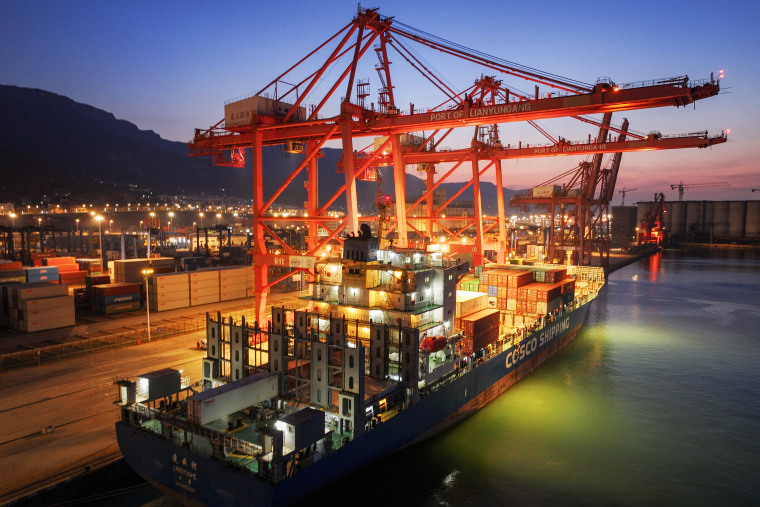
China’s retaliatory tariffs on select American imports came into force on Monday, signalling a dramatic escalation in the trade war between the world’s two largest economies. This development follows swiftly on the heels of new US-imposed levies, with President Donald Trump threatening further measures against other countries.
Beijing’s Swift Countermove
China unveiled its response on February 4, minutes after the United States imposed a sweeping 10% tariff on all Chinese imports. Beijing’s latest measures include a 15% tariff on US coal and liquefied natural gas (LNG) and a 10% tariff on crude oil, agricultural machinery, and large-engine vehicles. These actions, designed to inflict significant economic pressure on critical US export sectors, come as part of an intensifying tit-for-tat trade strategy.
Trump’s Tariff Offensive
President Trump announced plans to impose a 25% tariff on all steel and aluminium imports into the US, with details to follow on Monday. Speaking aboard Air Force One en route to the Super Bowl, Trump also revealed intentions to implement reciprocal tariffs against other nations. However, he stopped short of identifying which countries might be targeted.
The 25% tariff on steel and aluminium mirrors similar measures enacted during Trump’s first term. While exemptions were later granted to trading partners like Canada, Mexico, and Brazil, the potential for new tariffs threatens to reignite tensions. Trump’s criticism of European Union (EU) tariffs on US cars and goods has also raised speculation about a looming transatlantic trade conflict.
China’s Multi-Pronged Response
Beyond the new tariffs, China has taken broader steps to challenge the US. Last week, Chinese regulators initiated an anti-monopoly investigation into tech giant Google and added PVH, the US-based owner of Calvin Klein and Tommy Hilfiger, to its “unreliable entity” list. Furthermore, Beijing announced export controls on 25 rare metals vital for electrical devices and military equipment production.
Chinese officials also lodged a formal complaint with the World Trade Organization (WTO), accusing the US of “discriminatory and protectionist” practices. However, with the WTO dispute settlement panel currently paralyzed, experts warn that China is unlikely to secure a favourable ruling.
Global Trade Implications
The timing of Trump’s latest tariff threat, just days after reaching agreements with Canada and Mexico to avoid blanket tariffs, highlights the unpredictability of US trade policy. The administration has hinted at the possibility of exemptions for some countries but has yet to provide clarity. Meanwhile, Trump has suggested that a deal with the UK could mitigate potential tariffs on EU goods.
China’s assertiveness reflects a more prepared and resilient economic stance compared to the early days of the trade war. According to Scott Kennedy, a Chinese business expert at the Centre for Strategic and International Studies, “China’s technology capabilities and diversified trade partnerships have strengthened significantly, making them better equipped to handle US pressure.”
Logistical Fallout
The ripple effects of the tariffs are already being felt. On February 4, Trump suspended tariffs on small Chinese packages, citing the need for improved systems to efficiently collect tariff revenue. The abrupt change disrupted operations, with the US Postal Service (USPS) temporarily halting the acceptance of packages from China, only to reverse course a day later.
Diplomatic Standoff
While a meeting between Trump and Chinese President Xi Jinping had been anticipated, Trump has expressed no urgency to engage in talks. Meanwhile, tensions continue to simmer, with Beijing accusing Washington of leveraging false claims about fentanyl production to justify its trade measures.
The escalating tariff battle underscores the deepening rift between the two economic superpowers, with no clear resolution in sight. As both nations dig in their heels, the global economy braces for the far-reaching consequences of this intensifying trade war.
Story by: Mercy Addai Turkson



